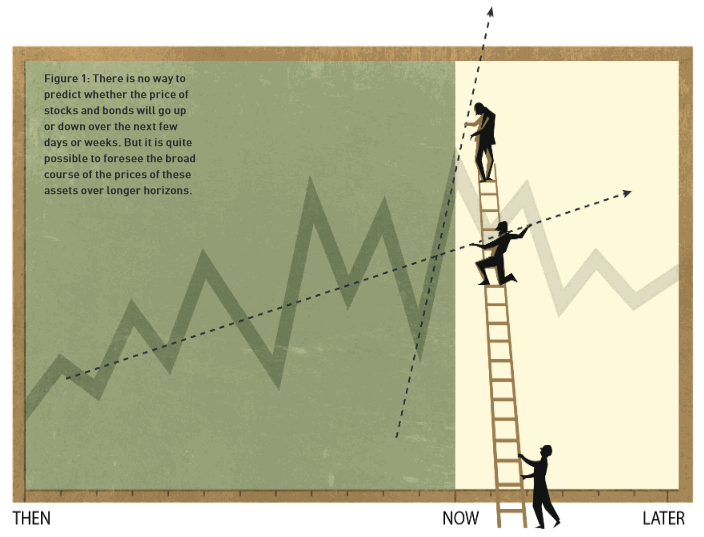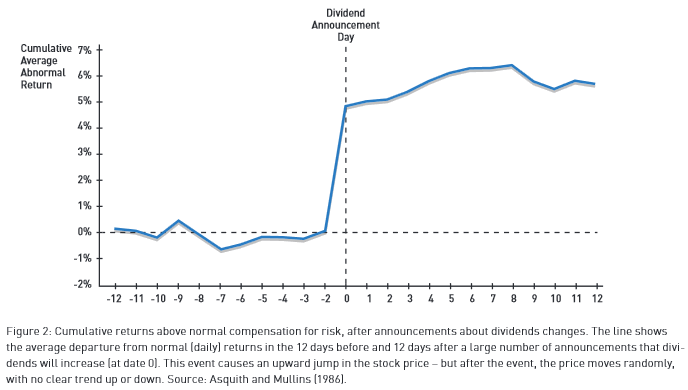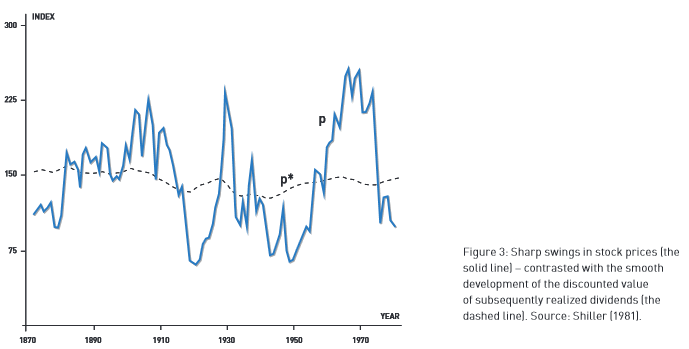|
|
|
|
|
|
|
News & Views item - October 2013 |
![]() 2013 Prize in Economic Sciences Honouring Alfred Nobel Awarded For Empirical
Analysis of Asset Prices. (October 15, 2013)
2013 Prize in Economic Sciences Honouring Alfred Nobel Awarded For Empirical
Analysis of Asset Prices. (October 15, 2013)
The 2013 Sveriges Riksbank Prize in Economic Sciences in Memory of Alfred Nobel was awarded jointly to Eugene F. Fama, Lars Peter Hansen and Robert J. Shiller for their empirical analysis of asset prices.

The press release from The Royal Swedish Academy of Sciences Reads:
There is no way to predict the price of stocks and bonds over the next few days or weeks. But it is quite possible to foresee the broad course of these prices over longer periods, such as the next three to five years. These findings, which might seem both surprising and contradictory, were made and analyzed by this year’s Laureates, Eugene Fama, Lars Peter Hansen and Robert Shiller.
Beginning in the 1960s, Eugene Fama and several collaborators demonstrated that stock prices are extremely difficult to predict in the short run, and that new information is very quickly incorporated into prices. These findings not only had a profound impact on subsequent research but also changed market practice. The emergence of so-called index funds in stock markets all over the world is a prominent example.
If prices are nearly impossible to predict over days or weeks, then shouldn’t they be even harder to predict over several years? The answer is no, as Robert Shiller discovered in the early 1980s. He found that stock prices fluctuate much more than corporate dividends, and that the ratio of prices to dividends tends to fall when it is high, and to increase when it is low. This pattern holds not only for stocks, but also for bonds and other assets.
One approach interprets these findings in terms of the response by rational investors to uncertainty in prices. High future returns are then viewed as compensation for holding risky assets during unusually risky times. Lars Peter Hansen developed a statistical method that is particularly well suited to testing rational theories of asset pricing. Using this method, Hansen and other researchers have found that modifications of these theories go a long way toward explaining asset prices.
Another approach focuses on departures from rational investor behavior. So-called behavioral finance takes into account institutional restrictions, such as borrowing limits, which prevent smart investors from trading against any mispricing in the market.
The Laureates have laid the foundation for the current understanding of asset prices. It relies in part on fluctuations in risk and risk attitudes, and in part on behavioral biases and market frictions.
The Academy also released the following information in two pdf files:
Information for the Public: Trendspotting in asset markets![]()
Scientific Background: Understanding Asset Prices![]()
In pictures:


